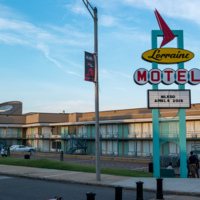
National Civil Rights Museum
The National Civil Rights Museum is housed in the Lorraine Motel, where civil rights leader Dr. Martin Luther King Jr. was assassinated on 4 April, 1968. It was founded in 1991 with the mission of sharing and raising awareness about the lessons and legacies from the Civil Rights Movement. The museum makes use of historic collections and a range of interactive exhibits, including film and audio, to tell these stories. Recently renovated in 2013-14, the museum is one of the top rated by the American Alliance of Museums and was a founding member of the International Coalition of Sites of Conscience.
The museum has five permanent exhibitions that include 260 artefacts, 40 film installations, oral histories and interactive media to guide visitors through five centuries of history. The exhibitions explore Civil Rights protest techniques- including sit ins, bus boycotts and freedom rides- as well as the Black Power movement and the assasination of Martin Luther King Jr. and its aftermath on the Civil Rights movement.
The first exhibition that visitors enter explores the longer 'Culture of Resistance' that was present in the United States prior to the Civil Rights movement, as seen through resistance to the system of slavery that dominated the country for centuries. Focussing on the period 1619-1869, the exhibition includes large scale interactive maps that emphasise the global impact of the transatlantic slave trade. There are films and art installations in the form of sculptures that show the terrible conditions inflicted on the enslaved people. Illuminated channels provide statistics and further information, including the number of people captured, goods cultivated and wealth created.
The museum also has facilities for temporary exhibitions, both on the site and online, and runs an immersive education programme for both children and adults.
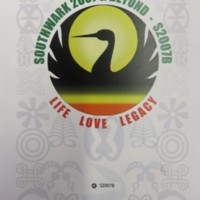
Southwark 2007 & Beyond (S2007B)
The Southwark 2007 & Beyond Steering Group was established to correct perceived misinformation about Britain's role in perpetuating slavery, and to promote education and dialogue on anti-slavery resistance and human rights. The Steering Committee was composed of representatives from Southwark's Afrikan, Afrikan Caribbean and Afro-descendant communities, and the year-long programme of events was funded by Southwark Council. August 2007 was a key month of the commemorative programme, focused on 23 August, the United Nations International Day for Remembrance of the Slave Trade and its Abolition, and the anniversary of the beginning of the Haitian Revolution. A 'Vigil of Remembrance, Resistance and Repairs' included speakers, performances and a libation ceremony. Other events included 'A Bicentennial Dialogue' featuring a keynote address by Dr Joy DeGruy-Leary. The publication 'Abeng Soundings: Abolitionist Landmarks of our Freedom March', co-authored by Esther Stanford of Rendezvous of Victory, provided an overview of the resistance efforts of African freedom fighters against slavery.
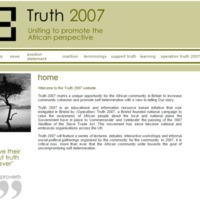
Truth 2007: Uniting to promote the African perspective
Truth 2007 was an educational and information resource-based initiative that was instigated in Bristol by (Operation) Truth 2007 led by Jendayi Serwah. It became a national coalition of UK-based Pan-African organisations which aimed to raise the awareness of the African perspective on local and national government plans to mark the bicentenary. Truth 2007 featured a series of lectures, debates, interactive workshops and informal social-political gatherings organised by community groups. The Truth 2007 coalition expressed dissatisfaction with much of the terminology and focus of the 'official' commemorations.
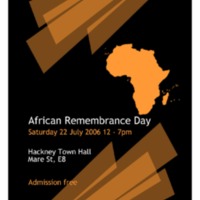
The Ligali organisation, 2007
Ligali is a Pan-African human rights organisation that challenges the misrepresentation of African people, culture and history in the British media. It produced various responses to promote the African perspective of the 2007 bicentenary, including their 'Declaration of Protest to the 2007 Commemoration' expressing dissatisfaction with much of the terminology and focus of the 'official' commemorations. Their particular focus was on the ‘Maafa’, derived from the Kiswahili word meaning ‘great disaster’, and referring to the ongoing impact of enslavement and colonialism for African peoples. The publication ‘Addressing Maafa denial and slavery apologists’ was a guide to promoting the truth about the Maafa from an Africentric position.
‘Maafa: Truth 2007’ is a documentary film directed by the Ligali founder, Toyin Agbetu, and produced by Ligali’s then head of media affairs, emma pierre. The film confronts some of the myths about British slavery, featuring contributions from community activists, project workers, teachers and the African British business community. The film was screened at various events, including African Remembrance Day at Hackney Town Hall in 2006. Ligali’s ‘Freedom Fighter’ stamps were designed by Emma Pierre-Joseph as a response to the Royal Mail’s publication of six stamps to mark the bicentenary. ‘The Walk’ is a documentary record of Toyin Agbetu’s protests at the service at Westminster Abbey to mark the bicentenary on 27 March 2007.
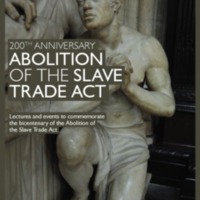
Service to Mark the Bicentenary of the Abolition of the Slave Trade Act
Westminster Abbey organised a series of lectures and events to commemorate the bicentenary. These included the lectures 'Olaudah Equiano, Black Abolitionist' by Professor Vincent Carretta, and 'The Abbey and the Abolition of the Slave Trade' by The Reverend Nicholas Sagovsky, Canon of Westminster. There was also an opportunity for visitors to attend William Wilberforce's memorial. On 27 March 2007 a national service of commemoration was held at the Abbey, and broadcast live on BBC One and BBC Radio Four. The service was attended by HM The Queen, the Prime Minister Tony Blair, other dignitaries and members of community and human rights organisations. Proceedings were disrupted by Toyin Agbetu of the Pan African, human rights based organisation Ligali. He objected to the celebratory tone of the service and its primary focus on William Wilberforce, highlighting the role of African freedom fighters and the absence of an official apology by the monarchy, government and church for Britain's leading role in transatlantic slavery, or Maafa (the Kiswahili term meaning ‘Disaster’, which is used to refer to the exploitation of Africa and its people by Europeans).
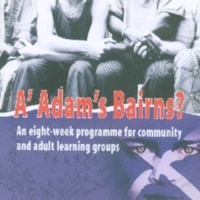
A' Adam's Bairns? Exploring equality and diversity in Scotland past and present
A’ Adam’s Bairns? is an educational resource pack produced in 2007 by a partnership of the National Library of Scotland and the Scottish Development Education Centre (Scotdec). The project explored equality and diversity both past and present, and looked at the attitudes and behaviours which underpinned slavery then and now, such as racism, sectarianism, prejudice and ignorance. The resources and reference materials are aimed at school children and also community and adult learning groups. They made use of material held by the National Library of Scotland and the National Archives of Scotland, and also included contemporary and traditional music produced by Scottish music expert Dr Fred Freeman, including a rendition of 'The Slave's Lament' by Robert Burns. Modules on the programme included slavery, forced movement of people and taking action for change.
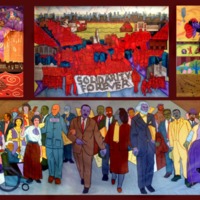
The City at the Crossroads of History
In 2011, the Puffin Foundation commissioned Mike Alewitz to paint a mural for the Puffin Gallery of Social Activism that would be on display in the Museum of the City of New York. Completed in 2014, the mural is a tribute to the labour and social justice movements and contains four panels. It includes slave ships and depicts the antislavery leader Frederick Douglass, as well as Martin Luther King Jr., Coretta Scott King and Elizabeth Gurley Flynn.However after viewing the mural, the museum declined to display it. They requested changes that reduced the prominence of Martin Luther King Jr. and added the Women’s Christian Temperance Union. Alewitz calls this a case of censorship and continues to campaign for his mural to be displayed.
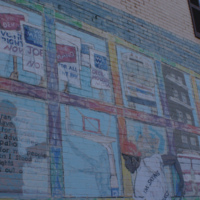
The Dignity of Work
In 1989, muralist Alfred Smith painted a mural in Anacostia, D.C., near Frederick Douglass’ residence during the last years of his life. It depicted the silhouette of Douglass alongside scenes from a labour protest. The mural, titled The Dignity of Work, contains a quotation from a speech by Douglass in 1888 before the International Council of Women. The mural had been destroyed by 2016.